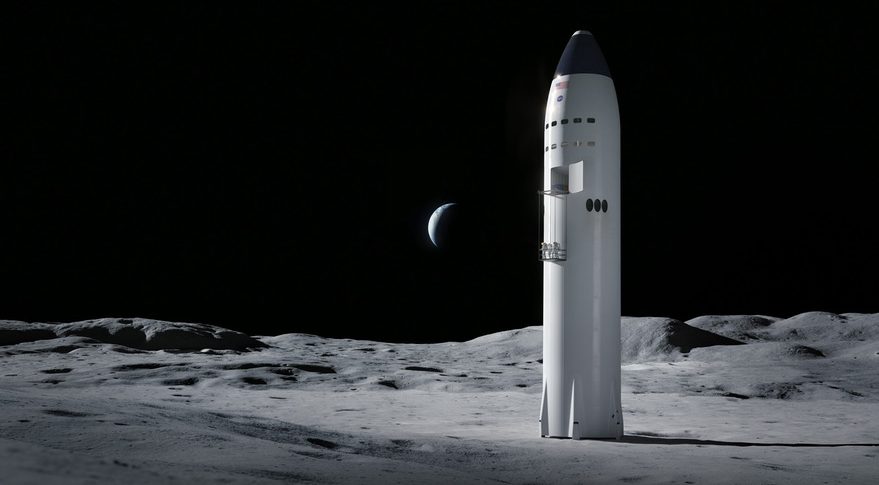

Starship is still an experimental craft and will fly many times before they attempt a lunar mission. The three failures were due mainly to problems with the first generation Raptor engines which are well in the rearview mirror (and not relevant to HLS, which will land using a ring of smaller, simpler engines around the the perimeter of the ship, near the nose to avoid kicking up dust.) None have tipped over after landing.

Of the 9 Starship prototype launches so far that attempted landings, three have failed completely and one blew up after landing, due to a methane tank leak. Long story short, it would have to come down pretty badly to tip over, at least in part because so much of the weight is in the engines, right at the bottom. But I know if I’m going up, I think I’d rather have the lander where that first step out the door is less of a doozy. I’m very excited to see humans on the moon again, and I love that this time there are bigger plans, with a lunar orbital station and multiple kinds of landers.

I even think the 32 feet of the Blue Moon is more than I’d like, but at least it’s just using a simple dumb staircase that’s unlikely to fail because, come on, it’s stairs. If you were designing a clean sheet lander, there is no way you’d arrive at the conclusion that you would like to put the main hatch 120 feet off the ground.
#Spacex lunar lander manual#
And what if the elevator itself has mechanical issues? I suspect there would be some sort of manual override, but if you’re stuck 110 feet in the air (well, not-air, I guess) that hardly seems like something you’d want to deal with. That high drop/climb introduces all sorts of potential issues for the astronauts on the surface: what if someone gets injured and needs to get back into the pressurized lander module quickly? That trip up on that elevator setup doesn’t seem like it would be particularly rapid. It says a lot about Starship’s flexibility that it can even be adapted to this use at all, but that doesn’t mean it’s an ideal setup at all. Starship is primarily an orbital vehicle, the upper stage of the whole launch stack atop a Super Heavy booster, and was primarily designed for that role, which is why it looks like, well, a rocket. This isn’t really a great design for a lander, having to get down over 120 feet from the front door to the ground, and that’s because, really, Starship was never intended to be a lander. Together, we are making an investment in the infrastructure that will pave the way to land the first astronauts on Mars.” We are in a golden age of human spaceflight, which is made possible by NASA’s commercial and international partnerships. “Today we are excited to announce Blue Origin will build a human landing system as NASA’s second provider to deliver Artemis astronauts to the lunar surface. Here’s what NASA Administrator Bill Nelson had to say about the choice: The Blue Moon design looks quite adaptable, as it can be used for cargo and crew, and I think it has one crucial advantage over the SpaceX Starship-based lander that I’ll explain in just a bit here. This second lander contract has been awarded to Blue Origin, who will build a version of their Blue Moon lander system to ferry crews from the planned near-lunar-orbit Gateway station to the moon and back. Today NASA announced a second contract for a new lunar lander had been chosen, in addition to the Starship-based lander system from SpaceX. That’s good, because we left a perfectly good electric car up there and a couple golf balls we should probably get back. As you may have heard, we’re finally getting ready to go back to the moon.


 0 kommentar(er)
0 kommentar(er)
